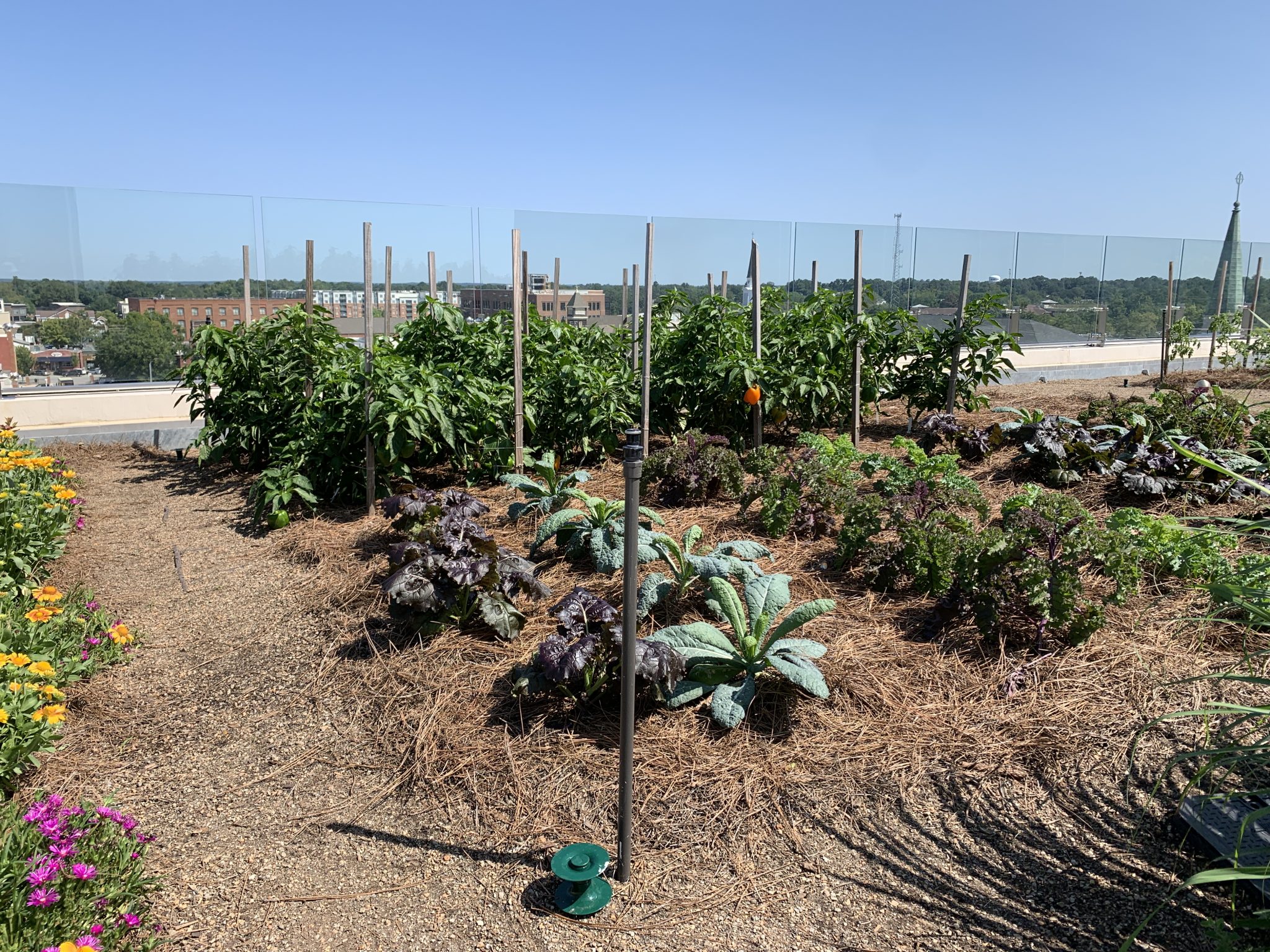Crop Production

Small farms are diversified farms that grow many crops in a limited space. One commonly-asked question is whether it is advisable to interplant ornamentals with vegetable crops, also known as companion planting. It is somewhat common to see ornamental plants in rows with vegetables, for example, in high tunnels or raised beds where space is limited. Begin by analyzing the pros and cons of the practice. Ultimately the producers are decision makers based on their experience, since there are many unknown ecological variables at play here.
Advantages
There are many advantages to growing ornamentals with vegetables. The first point includes the pollinators that ornamental plants attract, which can tremendously benefit insect-pollinated vegetable crops grown nearby. Besides pollinators, ornamental plants can also attract beneficial insects of various types, for example, lady beetles. So, the flower patch can serve as a pollinator and beneficial insect habitat.
The biggest advantage of the ornamental-vegetable mix is the aesthetics that can be a major advantage for urban farms and curated gardens where there is a direct consumer interaction. Rapid ground cover with bushy ornamentals can also smother weeds when planted on field edges. Some information is also available on the nematode-killing power of ornamental plants and herbs that mask the smell of main crops that deters insect pests. Growers must pay attention to their ornamental plants, canopy structure, and planting orientation relative to other vegetable crops for optimizing the benefits.
Disadvantages
Now let’s examine some of the disadvantages. From trap crop research experience (trap crops lure away insect pests from main crop), certain ornamental plants like sunflowers can lure in stink bugs, leaffooted bugs and other pests from a distance due to their height. Those sucking pests may eventually move to vegetable crops.
Certain invasive pests may also establish themselves on ornamentals, eventually becoming quite common in the ecosystem. Think about the western flower thrips and how widespread of a problem they are in many row and horticultural crops. Spider mites are also very big problem in ornamental plants and shrubs (for example, twospotted spider mite). They can jump to vegetable crops where they can be very difficult and expensive to control. Close proximity of ornamental plants with horticultural crops can be very problematic for organic farmers where control choices are limited.
Options to Reduce Insect Pests
A way to reduce the spread of pests is to have additional space between the ornamentals and vegetables, limiting movement between rows, and regularly monitoring any hot-spot for spot-treatments if needed. Carefully plan your crop rotation, cultivars, and plant spacing to avoid pest buildup and hot spots of insect activity. Consult the Extension office in your state for latest recommendations. Always test low-cost alternative pest prevention methods like sanitation, pest exclusion systems and others before making harsh treatment decisions. Long-term IPM strategies with good record-keeping can be more useful than short-term solutions that are environmentally harmful.
As a last note, specialty crop producers should scout weekly or more often. To stay up-to-date with additional IPM research and pest alerts in Alabama, producers should subscribe to the Alabama IPM Communicator E-newsletter. Use the Farming Basics Mobile App to subscribe to the newsletter, identify common insects/diseases/weeds, connect to beginning farmer resources, and to contact a commercial horticulture regional extension agent in Alabama.

